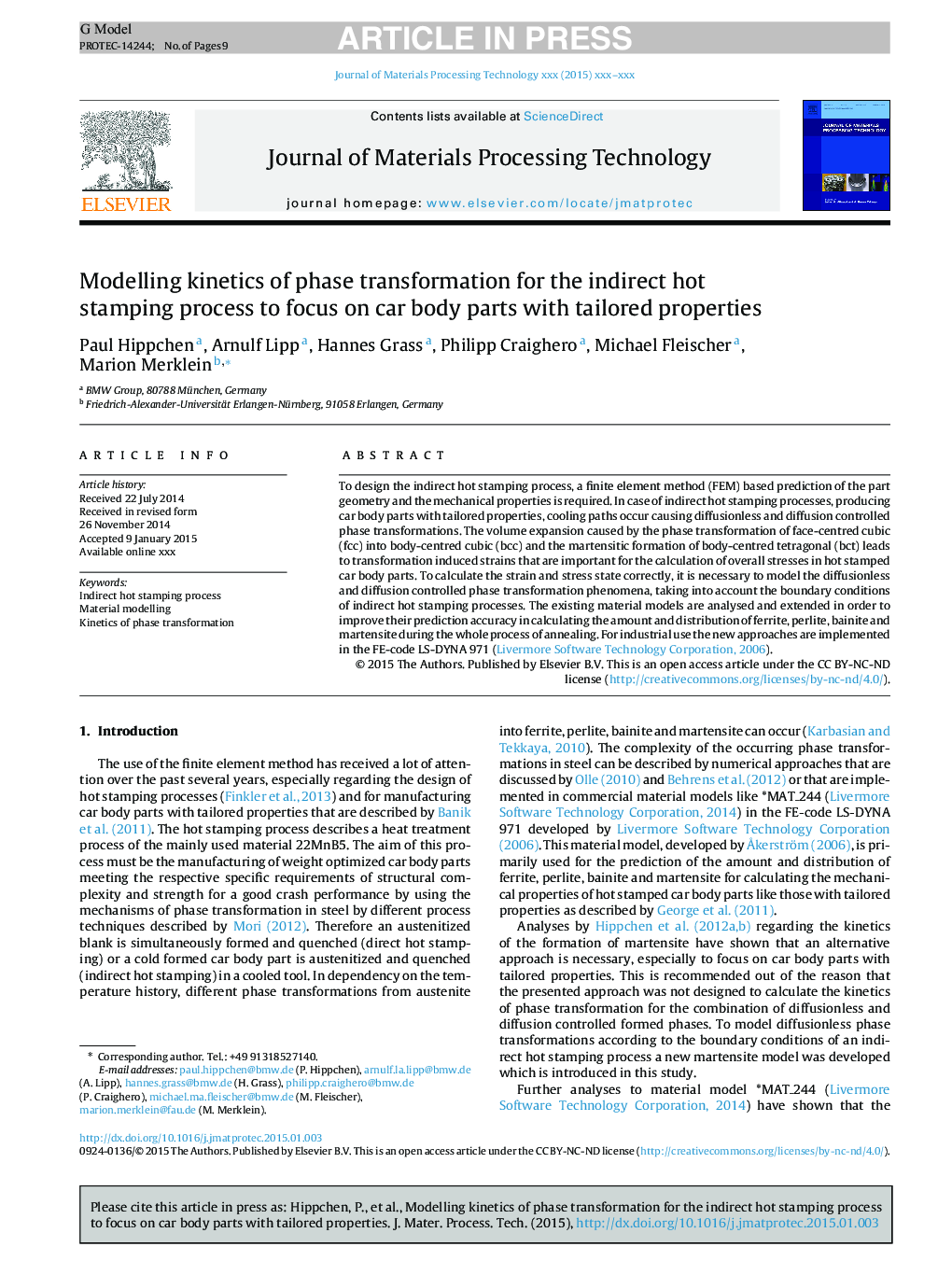| Article ID | Journal | Published Year | Pages | File Type |
|---|---|---|---|---|
| 7176915 | Journal of Materials Processing Technology | 2016 | 9 Pages |
Abstract
To design the indirect hot stamping process, a finite element method (FEM) based prediction of the part geometry and the mechanical properties is required. In case of indirect hot stamping processes, producing car body parts with tailored properties, cooling paths occur causing diffusionless and diffusion controlled phase transformations. The volume expansion caused by the phase transformation of face-centred cubic (fcc) into body-centred cubic (bcc) and the martensitic formation of body-centred tetragonal (bct) leads to transformation induced strains that are important for the calculation of overall stresses in hot stamped car body parts. To calculate the strain and stress state correctly, it is necessary to model the diffusionless and diffusion controlled phase transformation phenomena, taking into account the boundary conditions of indirect hot stamping processes. The existing material models are analysed and extended in order to improve their prediction accuracy in calculating the amount and distribution of ferrite, perlite, bainite and martensite during the whole process of annealing. For industrial use the new approaches are implemented in the FE-code LS-DYNA 971 (Livermore Software Technology Corporation, 2006).
Keywords
Related Topics
Physical Sciences and Engineering
Engineering
Industrial and Manufacturing Engineering
Authors
Paul Hippchen, Arnulf Lipp, Hannes Grass, Philipp Craighero, Michael Fleischer, Marion Merklein,
